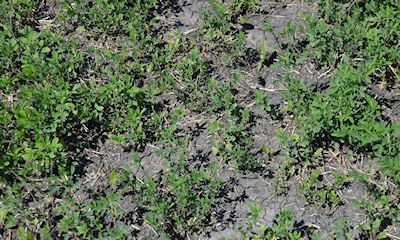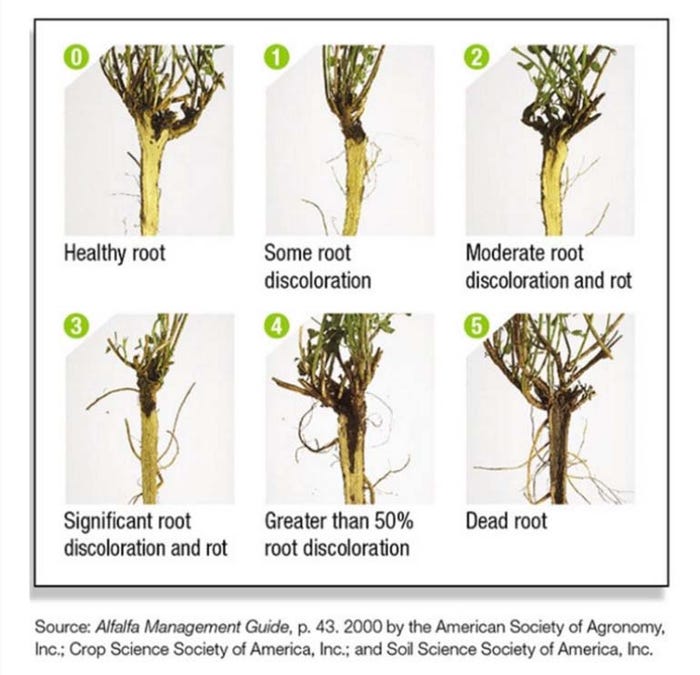April 21, 2017

It's time to evaluate your alfalfa fields for injury, says Dr. Jon Pretz, dairy nutritionist, Hubbard Feeds.
"We have had a relatively mild winter in most of the upper Midwest, however, the lack of snow in most areas is a concern as alfalfa plants can potentially die if exposed to extremely cold temperatures," Pretz said. "Typically, alfalfa plants can tolerate up to three weeks of winter injury before plants die. This window of time can vary due to soil temperatures with the window being smaller if soils are frozen and larger if soils are already at a higher temperature."
Factors that can affect alfalfa plant hardiness:
Stand age: Older stands are more likely to winter kill than younger stands.
Soil pH: Soils with a pH above 6.6 are less likely to experience winter injury.
Soil fertility: Stands planted with high natural fertility are less likely to experience winter injury than those with low fertility
Variety: Alfalfa varieties with superior winter hardiness ratings and a high disease resistance index are less likely to experience winter injury.
Cutting management: Harvest frequency and timing of fall cutting will affect alfalfa winter hardiness. Stands in which the last cutting is taken between Sept. 1 and the middle of October are at greatest risk as plants have not had enough time to accumulate carbohydrate levels in the root system before winter.
Snow cover: Snow provides insulation to the plants and the crown. The crucial temperature region is two to four inches below the soil surface where a large part of the root structure is located. Stands that have at least six inches of stubble left will be able to retain more snow cover and be less susceptible to winter injury.
How to diagnose winter injury
Stands which are slow to green up: Compare your stand to other fields in the area. If you notice great variation in your field with some green up and some areas still brown; it is time to further investigate the brown stands for injury or death.
Winter killed roots have a gray appearance: Healthy roots should be firm and white in color as shown in figure 1. If the root is soft and darker, it is a possible sign of winter cold-related death.
Asymmetrical /uneven growth: If asymmetrical growth is observed, a portion of the plant was likely winter-killed and only the healthy portion will be productive. If uneven growth is observed, a portion of the buds that were developed during the previous fall were likely injured and it will take time for those new buds to form thus resulting in shoots of different heights on the same plant.

Determine Yield Potential
Potential yield of an alfalfa field stand may be estimated by determining the number of stems in a square foot area. Once stem number is determined, use the following formula to calculate yield potential of that stand.
Yield (tons/acre) = (Stems/ft2 x 0.1) + 0.38
Example: An alfalfa field with 50 stems/ft2 would have a yield potential of 5.38 tons/acre. Remember, this is potential yield. Soil factors, nutrient deficiency, insects, diseases and many other things may affect the actual yield. The following guidelines can be used to help decide on whether to keep or replace the alfalfa stand.

Source: Hubbard Feeds
You May Also Like




